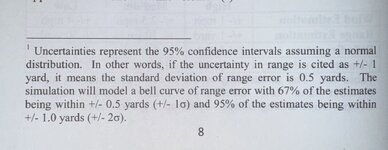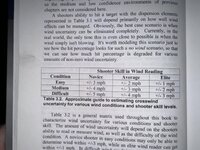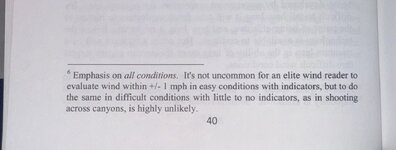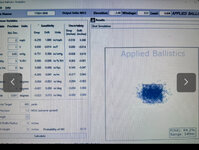Formidilosus
Super Moderator
- Joined
- Oct 22, 2014
- Messages
- 8,270
If the input in the WEZ for wind is the SD (standard deviation) on wind error, and you say you can call it within +/-4 mph 95% of the time. I think thats like saying 2*sd= 4mph. and would expect that "
gives a SD of 4mph/2=2 mph.
Because 2 SD captures 95% of occurrences? If the WEZ has specific documentation that says the SD input should be what you expect to see 95% of the time and its not standard deviation ignore me.
It is not SD. This can all be found in “Accuracy and Precision For Long Range Shooting” by Bryan Litz.
It’s 95% confidence at the stated MPH, then it follows a normal distribution.

To give an idea of “realistic” wind calling ability (and I can state that even this is being generous)-

If some one does not practice regularly (every couple of weeks) in broken, mountainous terrain, in areas and shots they have never seen before, they are at best “novice”, and broken terrains with wind are “difficult” conditions. If it is someone that is shooting in the mountains with wind only once or twice a year for practice- they aren’t even “novice”- a realistic expectation is that frequently enough they can, and will be off their wind call 10-12 mph.
A note Bryan makes about making wind calls in canyons and broken terrain-

Last edited:


